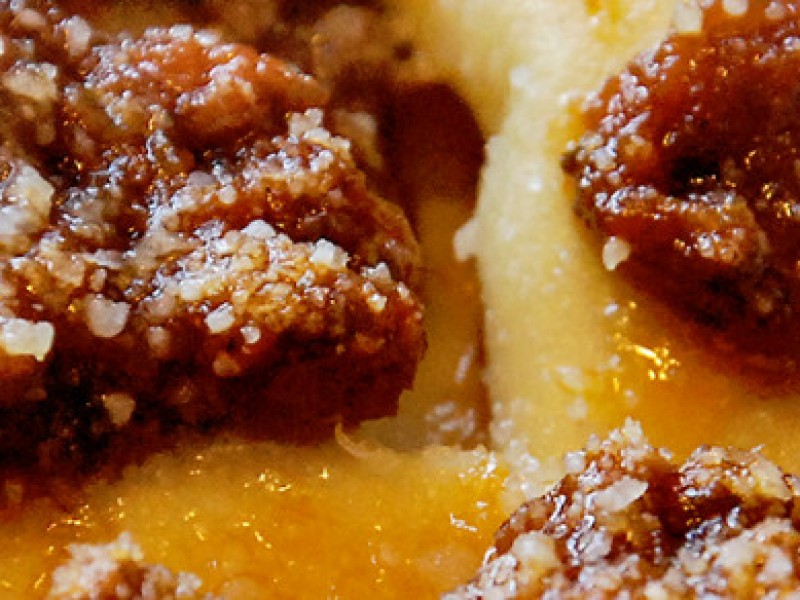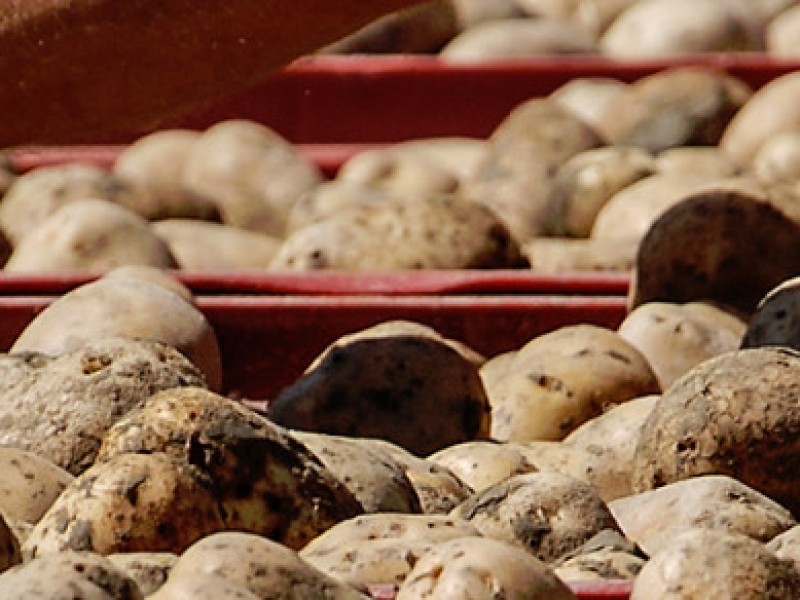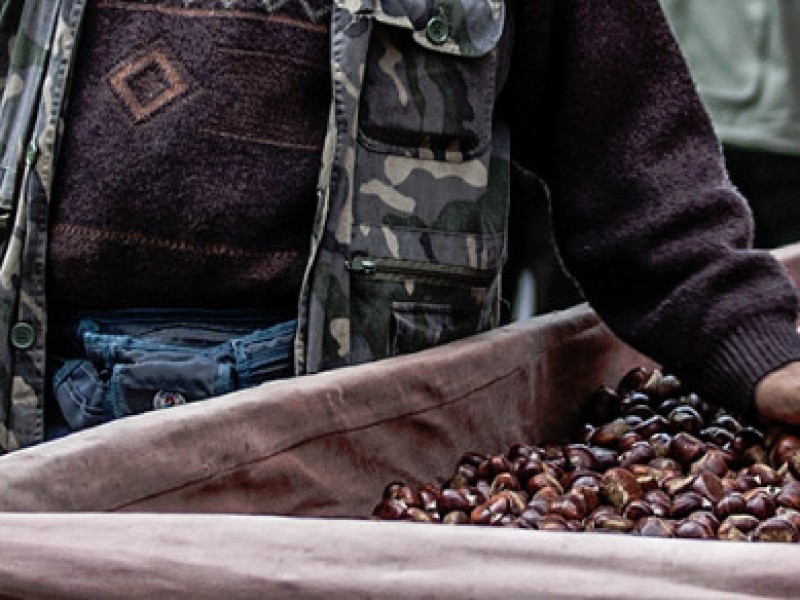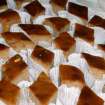A cuisine that has been influenced by both history and geography
 Although Mugello stands isolated by mountains and woods, and has been, for centuries, a mere rural extension of Florence, it is a land that has borne numerous influences. On one hand we find Florence with its history and seigniories, and on the other the nearby Romagna and its lords, not to mention the Medici court, and its profound Christian fervour. All these things have influenced not only the history and character of Mugello, but also the cuisine. There are obvious traces of these influences in the abundant use of meat, much of which arrived in Florence from Mugello, or first courses, which resemble those prepared in Romagna, and in the work of Pellegrino Artusi, who like this very valley, lived between Florence and Emilia-Romagna. And let us not forget the important Medici dishes, which were elaborated by cooks from all over the world who, especially during the times of Caterina, created specialities to be served in banquets in Cafaggiolo Castle. These specialities were then, thanks to the local kitchen help, adopted by the local population, who prepared them with the only ingredients they had at hand. These ingredients were fresh and abundant and always seasonal and offered, along with an exquisite flavour, healthy and nutritional meals that were perfect for the hard work in the fields. Numerous special events, many religious, also offered dishes to enhance the feast during these holidays, and to celebrate the patron saint or the end of fasting.
Although Mugello stands isolated by mountains and woods, and has been, for centuries, a mere rural extension of Florence, it is a land that has borne numerous influences. On one hand we find Florence with its history and seigniories, and on the other the nearby Romagna and its lords, not to mention the Medici court, and its profound Christian fervour. All these things have influenced not only the history and character of Mugello, but also the cuisine. There are obvious traces of these influences in the abundant use of meat, much of which arrived in Florence from Mugello, or first courses, which resemble those prepared in Romagna, and in the work of Pellegrino Artusi, who like this very valley, lived between Florence and Emilia-Romagna. And let us not forget the important Medici dishes, which were elaborated by cooks from all over the world who, especially during the times of Caterina, created specialities to be served in banquets in Cafaggiolo Castle. These specialities were then, thanks to the local kitchen help, adopted by the local population, who prepared them with the only ingredients they had at hand. These ingredients were fresh and abundant and always seasonal and offered, along with an exquisite flavour, healthy and nutritional meals that were perfect for the hard work in the fields. Numerous special events, many religious, also offered dishes to enhance the feast during these holidays, and to celebrate the patron saint or the end of fasting.
The meals were poor but of great substance and flavour, and the great talent of the cooks lay in the use of fresh, simple home grown ingredients that could be found in ones own garden.
The sweets in the tradition
The same can be said for the creation of sweets. Eggs, flour, milk, butter, marroni chestnuts, honey and grapes have always been part of the local cuisine, and sweets meant feasts, and therefore an alternative to the daily meals that were essentially the same week after week. Almost every farm house had its own wood-fired oven where, once the bread had been baked and the oven cooled slightly, excellent cakes could be made to be used for breakfast or breaks in the long work day.
Until the post-war years, town holidays, religious holidays, the Carnival season and harvest feasts were a time in which housewives applied themselves the most and competed to make the best, most tasty cakes. Sweets were offered after Mass, often an occasion for young single men to court single women.
Seasons were extremely relevant: with the grape harvest came a grape pie (grapes baked on flattened bread dough) called schiacciata con l’uva, which was a nutritional food at harvest time, and also propitiating. With the cold winters came the easily preserved marroni chestnuts, especially in the Apennines, which can be eaten fresh - they are, in fact sweet by nature, and therefore no sugar is added - or, once dried, can be used as flour for the preparation of various foods. Spring brought with it numerous different types of fruit and aromas, and was therefore perfect for making pies, biscuits, and sweets made with rice. In summer milk and eggs were abundant and, thanks to the creativeness of certain cooks, a perfect time to prepare fresh and nutritional custards and mousses.
A taste for sweets has been passed on through the ages along with an appreciation for first quality, delicious ingredients that make the production of sweet foods in Mugello reason for a stopover, if not a long stay, in which to appreciate the numerous bakeries and pastry shops in the territory.
The typical recipes
In the recent past a number of devoted restaurant owners in cooperation with the Tourist Office of the Comunità Montana Mugello have picked out a number of recipes from the traditional recipes rediscovered by Tebaldo Lorini, an expert in local customs. The purpose was to propose a typical Mugello menu that would bring out the importance of traditional foods and local products.
Among the various recipes of traditional sweets we find the particular zuccherini biscuits, which were placed in the Befana stocking and hung on the fireplace on the Epiphany, and which helped strengthen the teeth of small children, the berlingozzi, a Renaissance biscuit, which is, strangely enough, boiled and then baked, and also the bocche di dama, made with eggs, chopped almonds and grated lemon rind.
Given the richness of its chestnut forests, the area obviously made good use of its marroni chestnuts when preparing sweets. The castagnaccio is among the most famous. There are two main recipes: one in which only water is added to the chestnut flour, oil and rosemary mixture; and the other in which the mixture is enhanced with raisins, pine seeds and walnut kernels. Obviously this second recipe was rarely prepared in poor farm homes. Another famous sweet is the torta di marroni. This recipe is more elaborate but extremely tasty. It is made by combining smooth and creamy marroni puree with light and crumbly puff pastry.
Among the cake recipes we find a recipe rediscovered by Lorini called crostata di ricotta. This elaborate cake is made with ricotta, raisins, eggs, candied citron-peel, chopped almonds, sugar and rum. The schiacciata con l’uva is a simple sweet that is directly linked to the grape harvest and is made with bread dough and grapes.
Fried sweets are also a part of tradition. One of the recipes is frittelle, made with apples or rice for the feast days of San Biagio, and San Giuseppe, respectively. In Upper Mugello another fried sweet is very popular: tortellini fritti. The tortellini are filled with marroni puree, rum and alkermes, and a touch of icing sugar.




































































